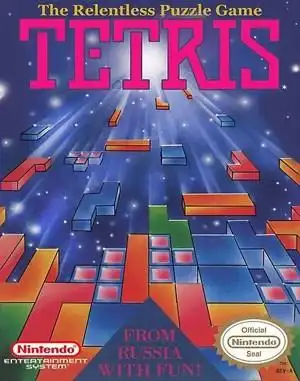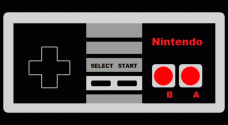Few games are as instantly recognizable, as universally understood, or as deeply ingrained in our collective memory as Tetris. It's more than just a video game; it's a cultural phenomenon, a brain-bending challenge, and for many of us, a key part of our retro gaming journey. From monochrome handheld screens to glowing arcade cabinets, the simple act of rotating and dropping falling blocks has captivated players for decades.
But what is it about this seemingly basic puzzle game that gives it such incredible staying power? Let's take a trip down memory lane and explore why Tetris remains an absolute essential.
The Simple Magic: Why Tetris Just Works
At its core, Tetris is incredibly straightforward. You get seven distinct shapes, made of four blocks each (the tetrominoes), and your goal is to arrange them as they fall to create solid horizontal lines. Complete a line, and it disappears, making space for more blocks. Fail to manage the rising stack, and it's game over.
This elegant simplicity is its genius. There are no complex controls, no convoluted storylines, just pure, unadulterated spatial reasoning and quick reflexes. The immediate feedback loop – clear a line, get points, feel satisfaction – is incredibly addictive. As the speed increases, the pressure mounts, pushing your brain into a focused, almost meditative state where only the falling blocks matter. It's a perfect blend of easy-to-learn mechanics and incredibly difficult-to-master strategy.
More Than Just Falling Blocks: A Brief Tetris Story
Part of the charm of Tetris is its fascinating origin story. Created by Soviet software engineer Alexey Pajitnov in 1984, the game's journey from a Moscow research institute to global domination is the stuff of legend, involving complex licensing battles and international intrigue.
But for many retro gamers, the story really begins with Nintendo. The bundling of Tetris with the original Game Boy in 1989 was a stroke of genius. This portable pairing was a match made in heaven, turning the Game Boy into a must-have device and introducing an entire generation to the addictive puzzle action wherever they went – on the bus, under the covers, during long car rides. The iconic theme music (Type A, based on the Russian folk song "Korobeiniki") is instantly recognizable and triggers waves of nostalgia for anyone who owned that grey brick.
Where Did YOU Play It? Different Flavors of Fun
While the Game Boy version might be the most iconic for many, Tetris wasn't confined to just one console. We played it everywhere!
- Game Boy: The classic, monochrome, portable experience. Perfect for quick sessions or marathon runs on the go.
- NES: Different versions offered different modes, including competitive two-player modes that led to many heated living room battles. Tengen's unlicensed version is often remembered fondly for its unique modes.
- Arcade: Standing in front of a dedicated Tetris cabinet, often with vibrant graphics and booming sound, was a different kind of thrill.
- PC: Early PC versions, sometimes simple ports, sometimes with added features, brought Tetris to the desktop long before it was common. (Remember trying to play via DOSBox?)
Each platform offered a slightly different feel, but the core gameplay remained universally compelling.
The Tetris Legacy: Games That Followed
Tetris didn't just stand alone; it inspired countless other puzzle games. Developers saw the potential in falling blocks and unique mechanics, leading to a wave of creative variations. Games like:
- Dr. Mario: Swapping blocks for colored capsules and viruses, adding a matching element.
- Wario's Woods: Giving you direct control of a character within the puzzle grid, mixing action with block arrangement.
- Yoshi: Focusing on controlling the stack and matching falling enemies and egg halves.
These games, while distinct, owe a clear debt to the fundamental appeal established by Tetris. They are testaments to the versatility and enduring influence of Pajitnov's original design.
Playing Today: How to Get Your Retro Tetris Fix
Feeling the urge to drop some tetrominoes? Luckily, finding a way to play Tetris today is incredibly easy – perhaps easier than finding some other retro gems.
You can find modern versions on just about every platform imaginable. If you're craving that authentic retro feel:
- Emulation: Fire up an emulator for NES, Game Boy, or even old arcade systems to revisit the originals.
- Digital Stores: Keep an eye on platforms like GOG or console online stores (like Nintendo Switch Online) which sometimes feature classic versions or inspired titles like Dr. Mario.
- Browser Versions: Numerous free browser-based versions exist, often mimicking the classic look and feel.
- RetroPie/Emulation Devices: Perfect for hooking up to a TV and getting that couch multiplayer experience with classic versions.
Whether you prefer the handheld nostalgia or the competitive intensity of a two-player match, the block-dropping fun is readily available.
Frequently Asked Questions
Q: Is there an official "best" version of Tetris? A: It depends on preference! The Game Boy version is iconic for portability and nostalgia. Arcade versions like Tetris: The Absolute: The Grand Master 2 PLUS are highly regarded for competitive play, while different console versions offer unique modes or multiplayer options.
Q: Can I play Tetris with friends? A: Absolutely! Many classic versions (especially on NES, SNES, and Arcade) included competitive two-player modes. Modern versions often have online multiplayer too.
Q: Why is the music so famous? A: The main theme, often called "Type A," is based on the 19th-century Russian folk song "Korobeiniki." Its catchy, driving rhythm became synonymous with the game, especially after being featured so prominently in the Game Boy release.
Q: Did Tetris invent the puzzle genre? A: No, puzzle games existed before Tetris, but its unique mechanics and massive global success undeniably revolutionized the genre and inspired countless subsequent titles.
The Blocks Keep Falling
Tetris isn't just a relic of the past; it's a timeless masterpiece of game design. Its simple concept, perfect execution, and addictive gameplay ensure that it remains relevant and fun, no matter how many years go by or how many polygons modern games boast.
So next time you have a few minutes, fire up a classic version. Feel the rush as the speed increases, hear that familiar tune, and remember why this humble game about falling blocks captured our hearts and minds all those decades ago. The call of the tetrominoes is eternal.


